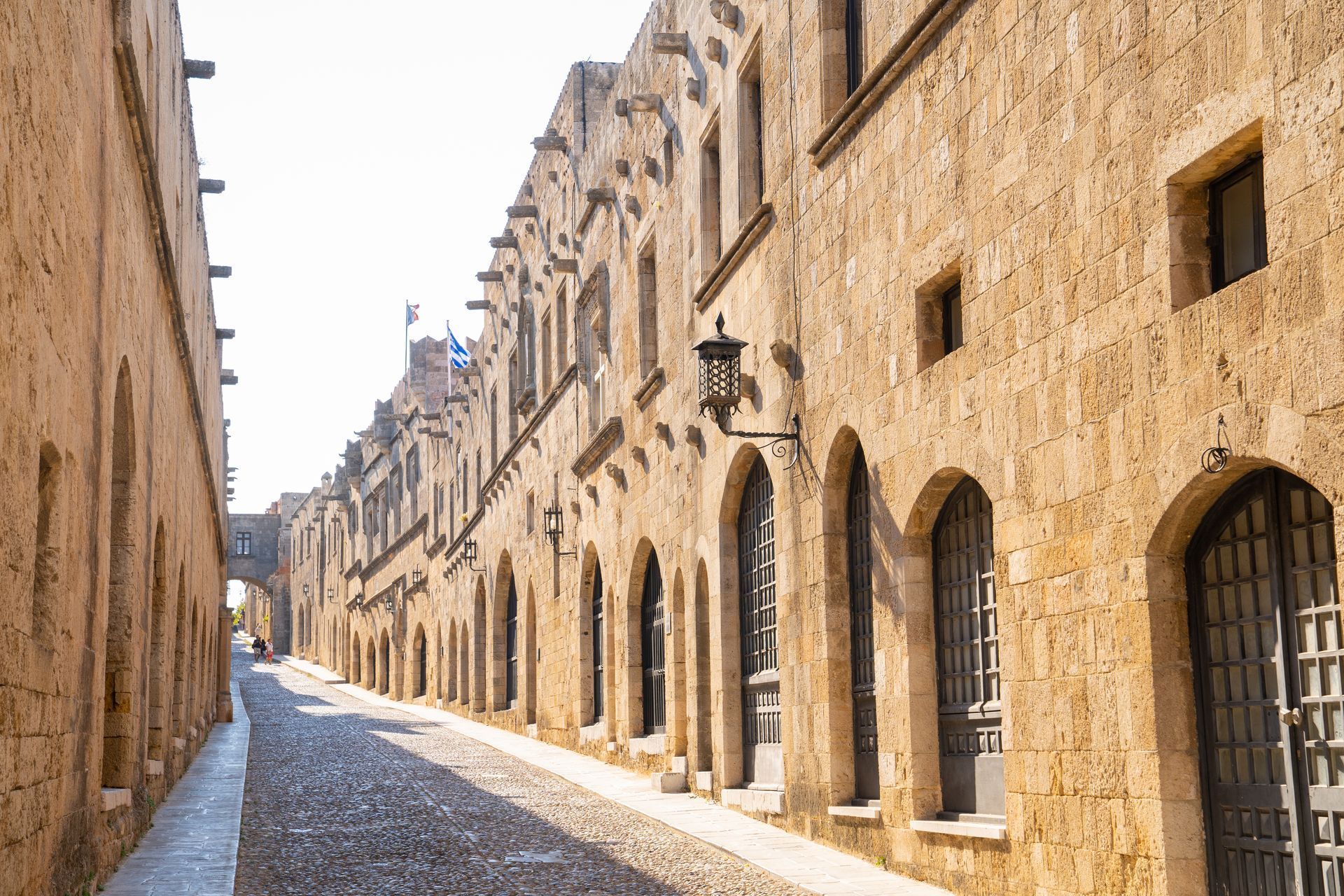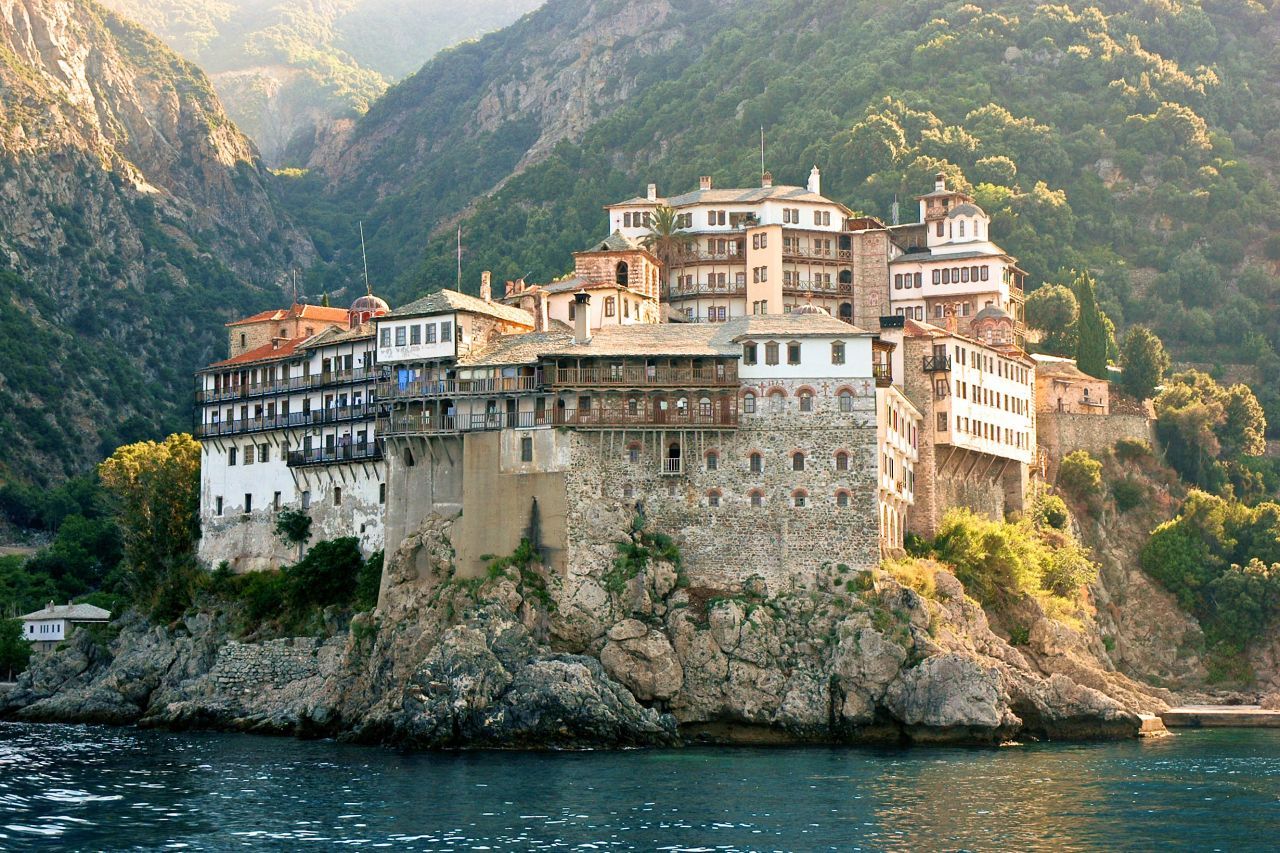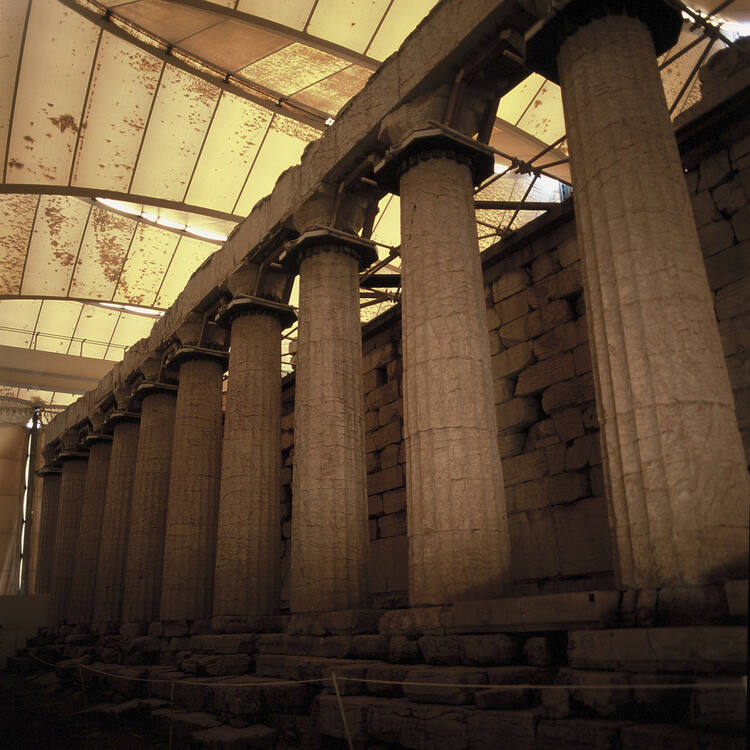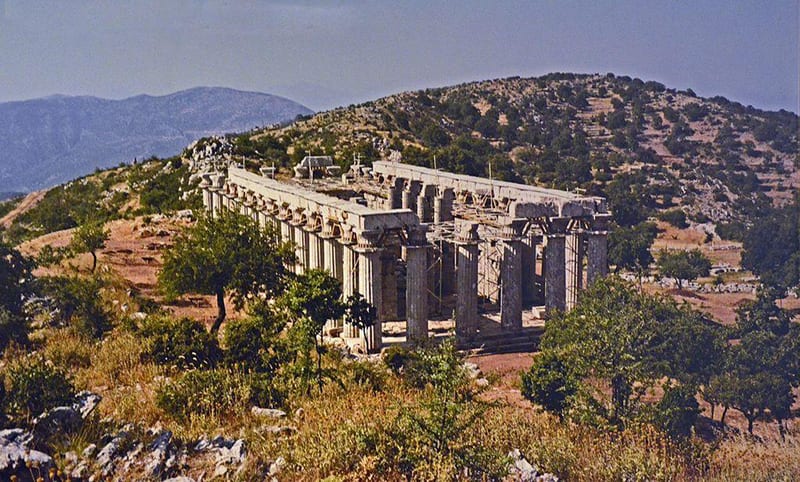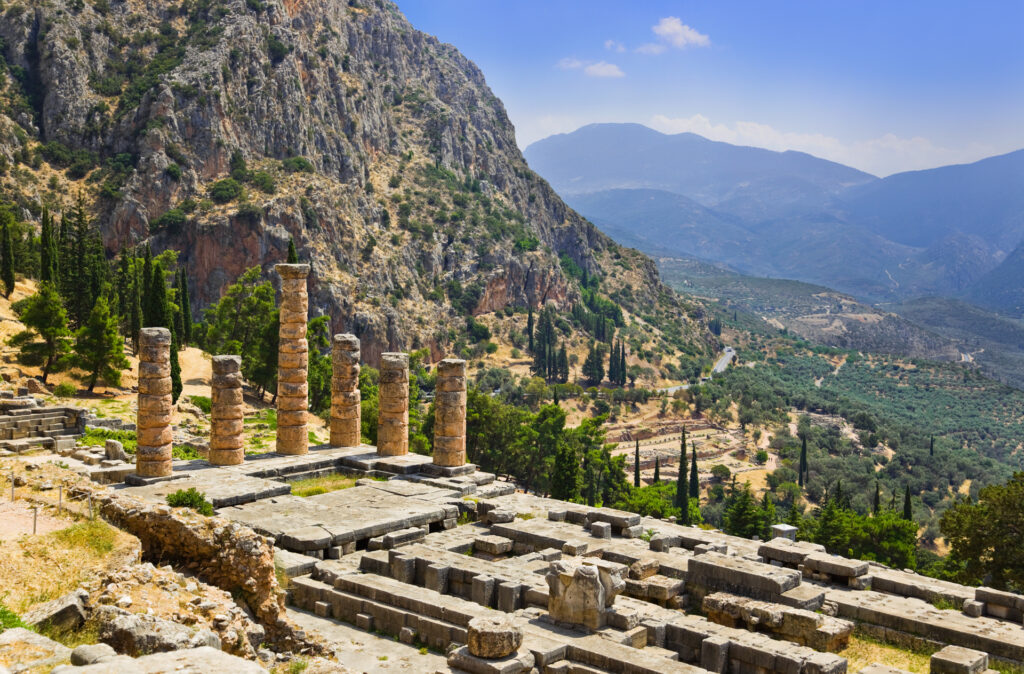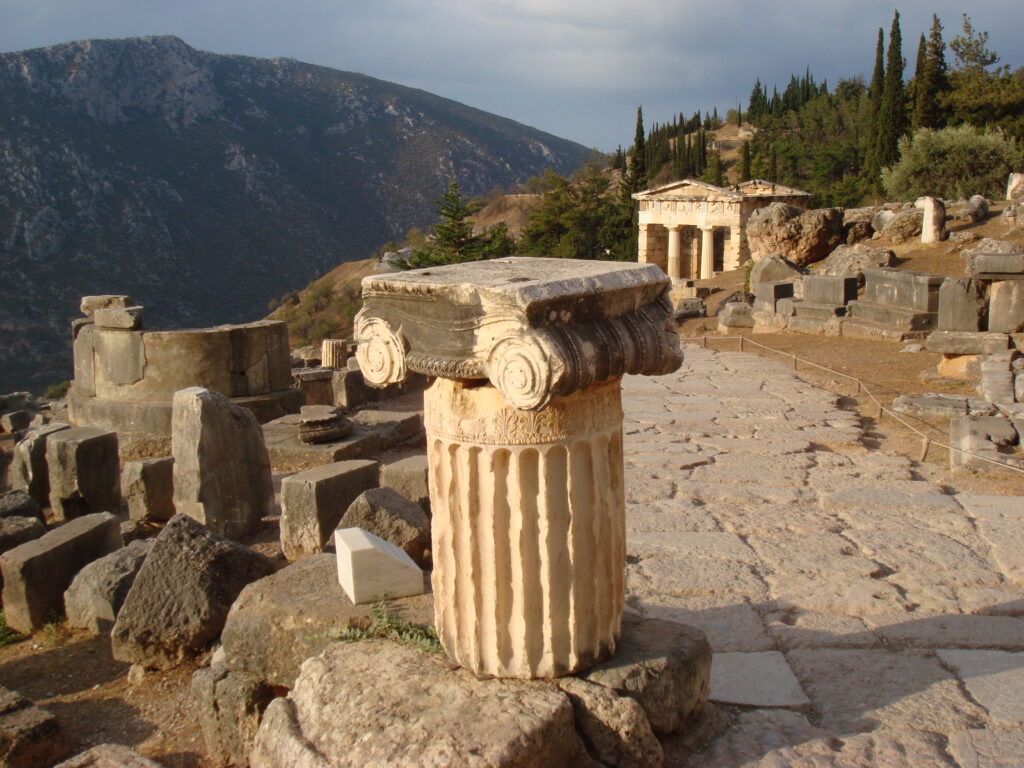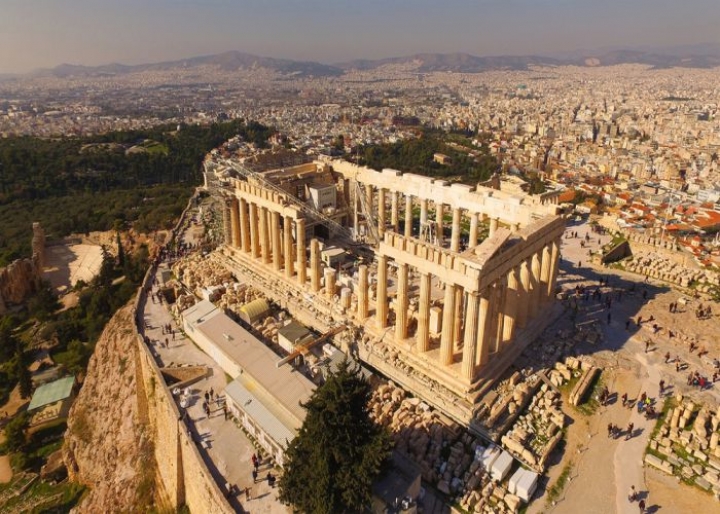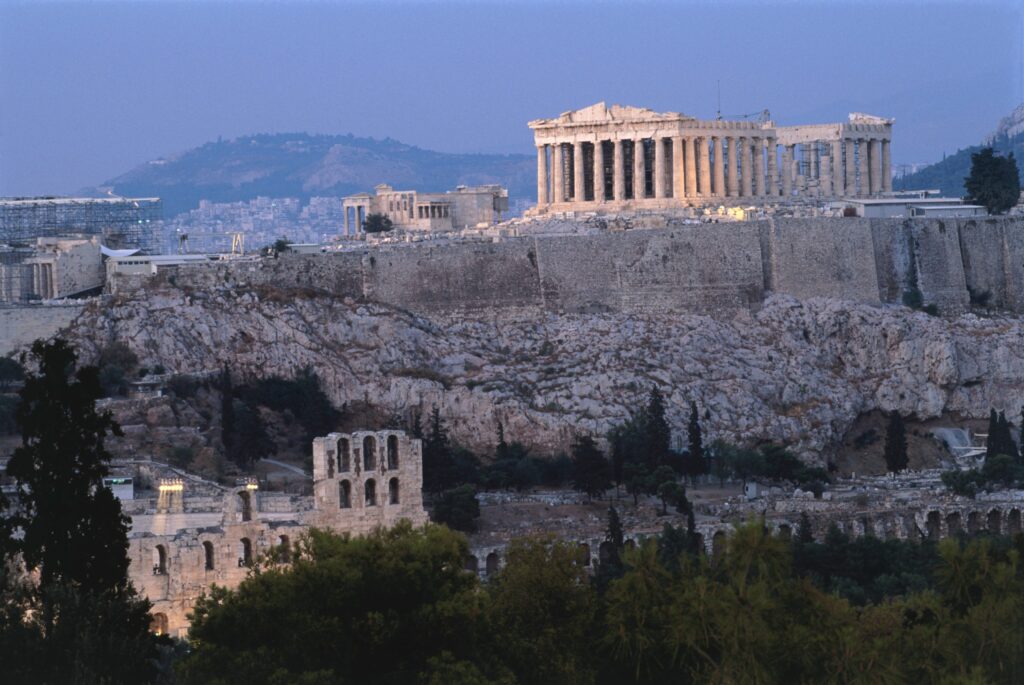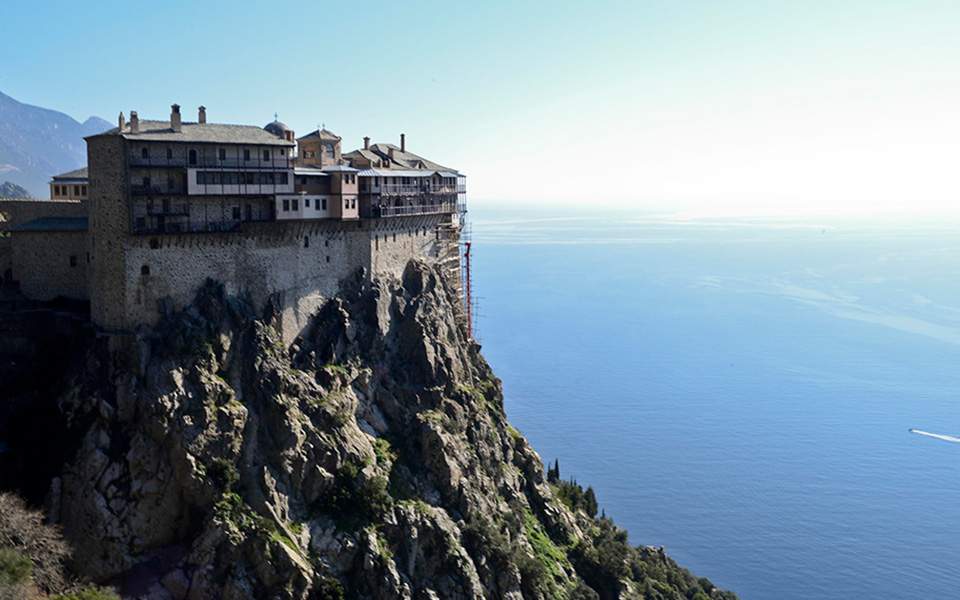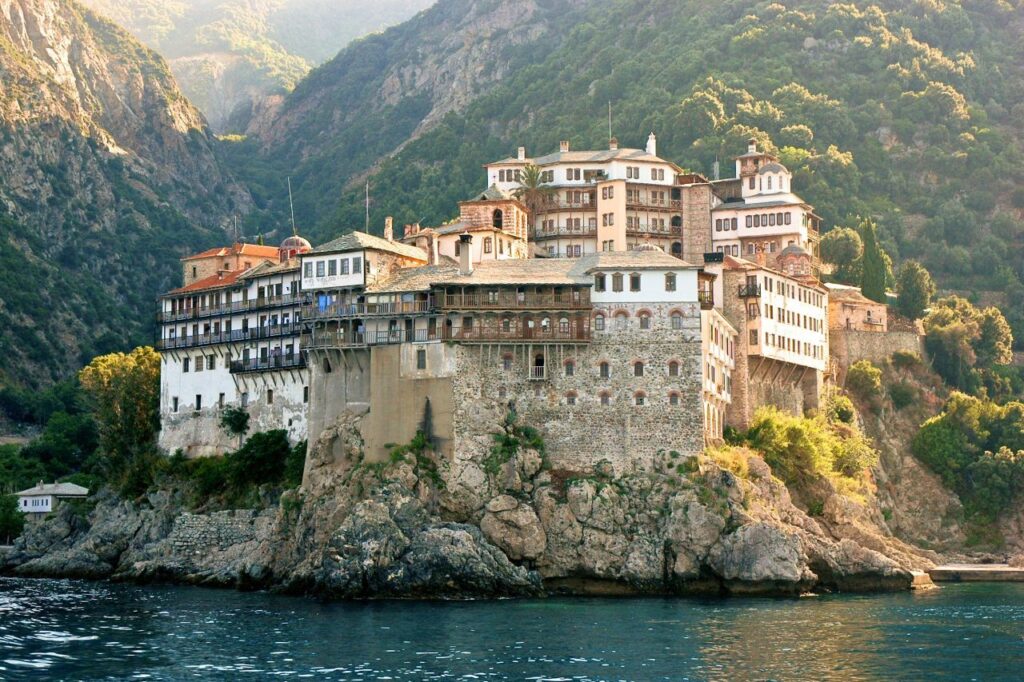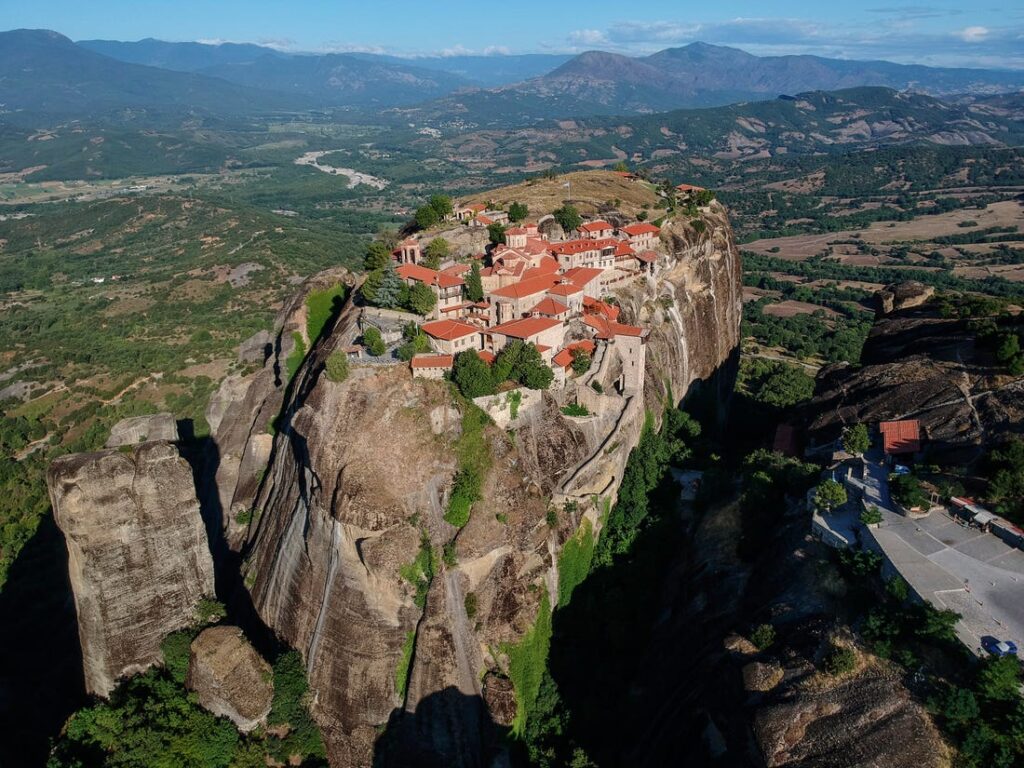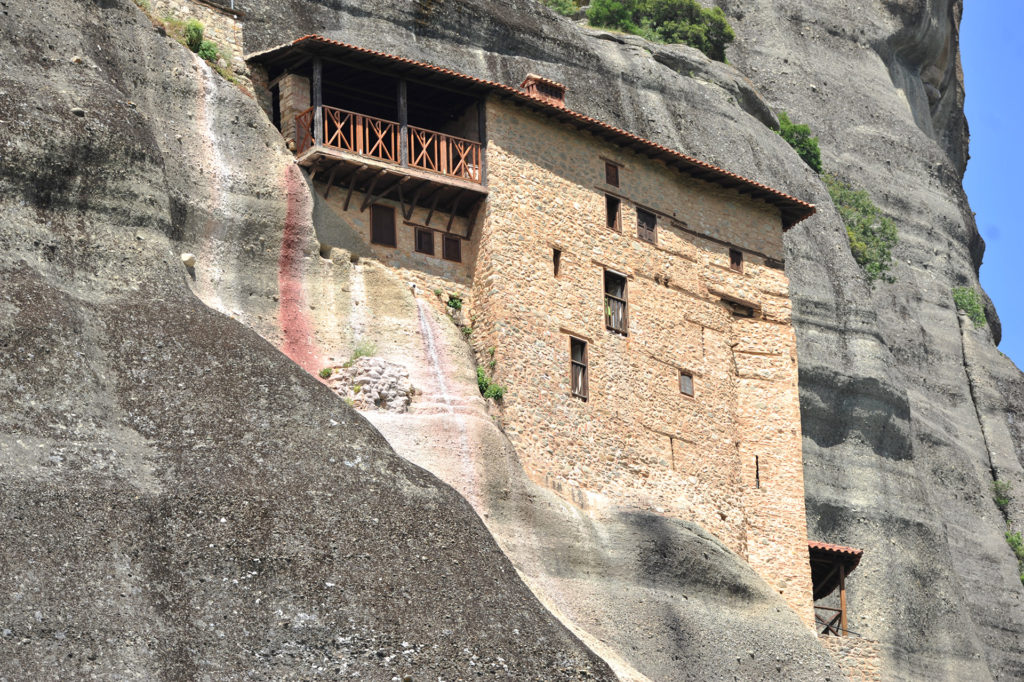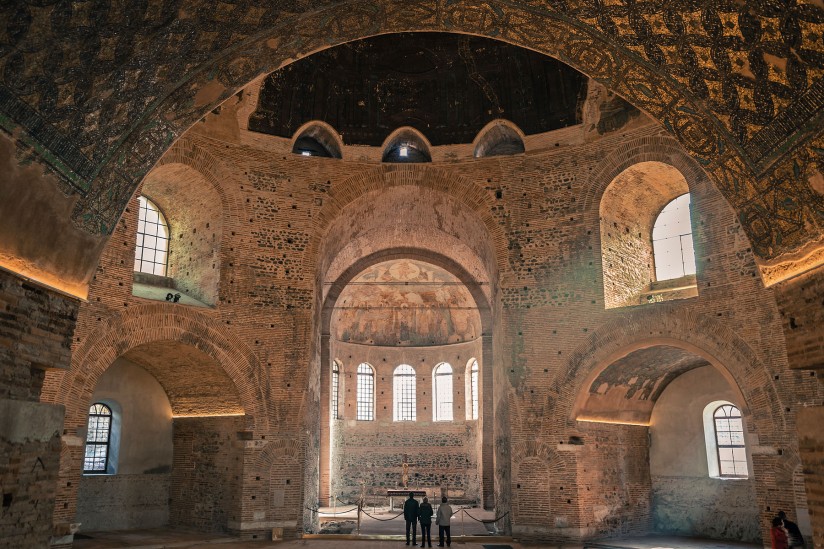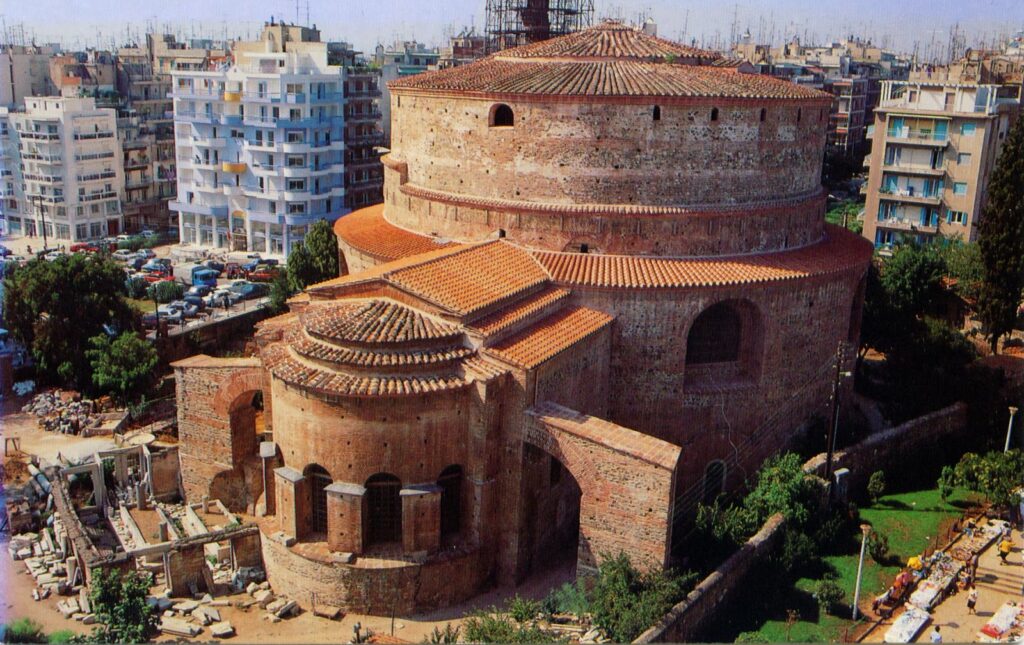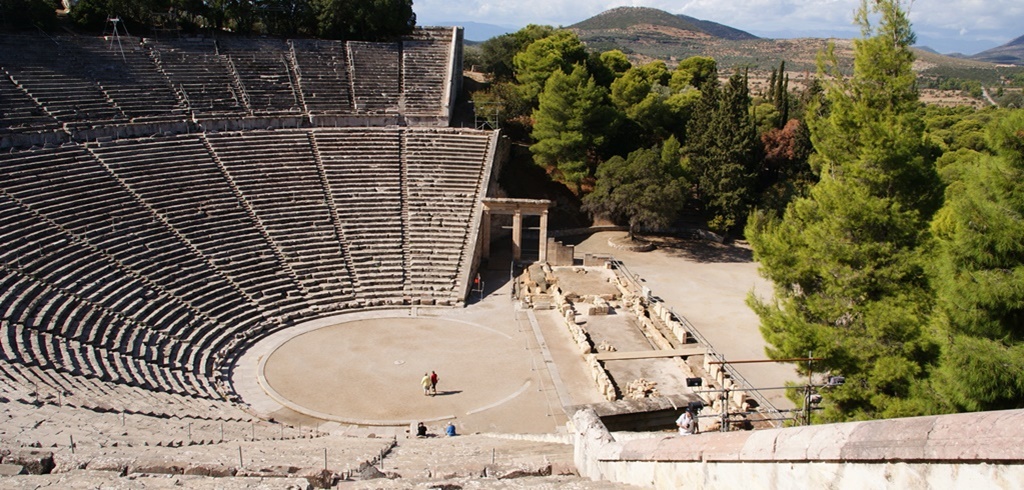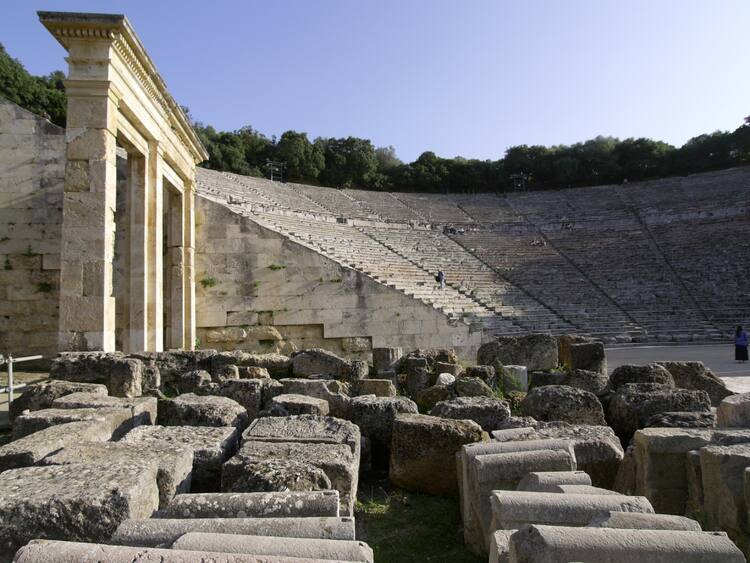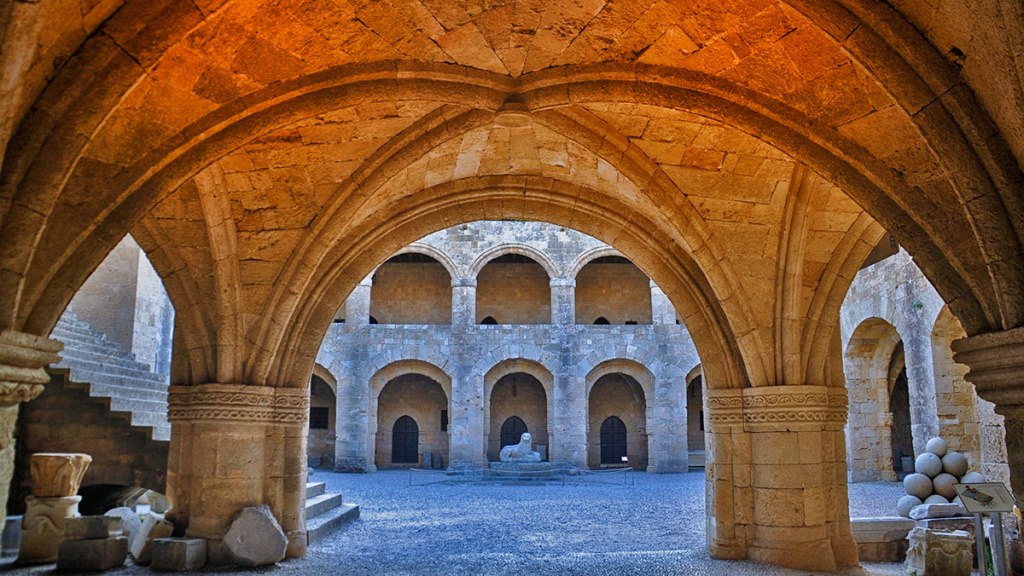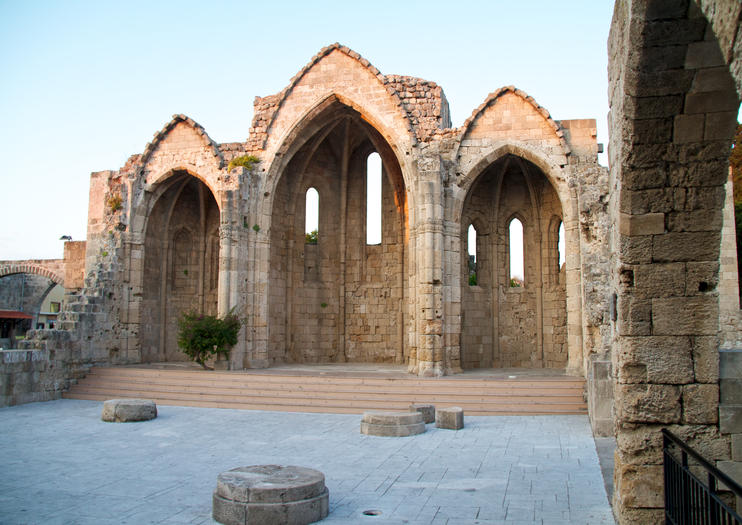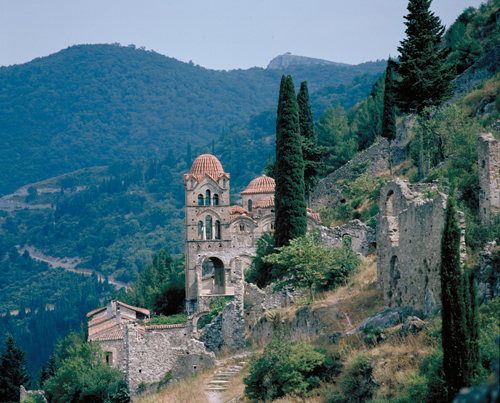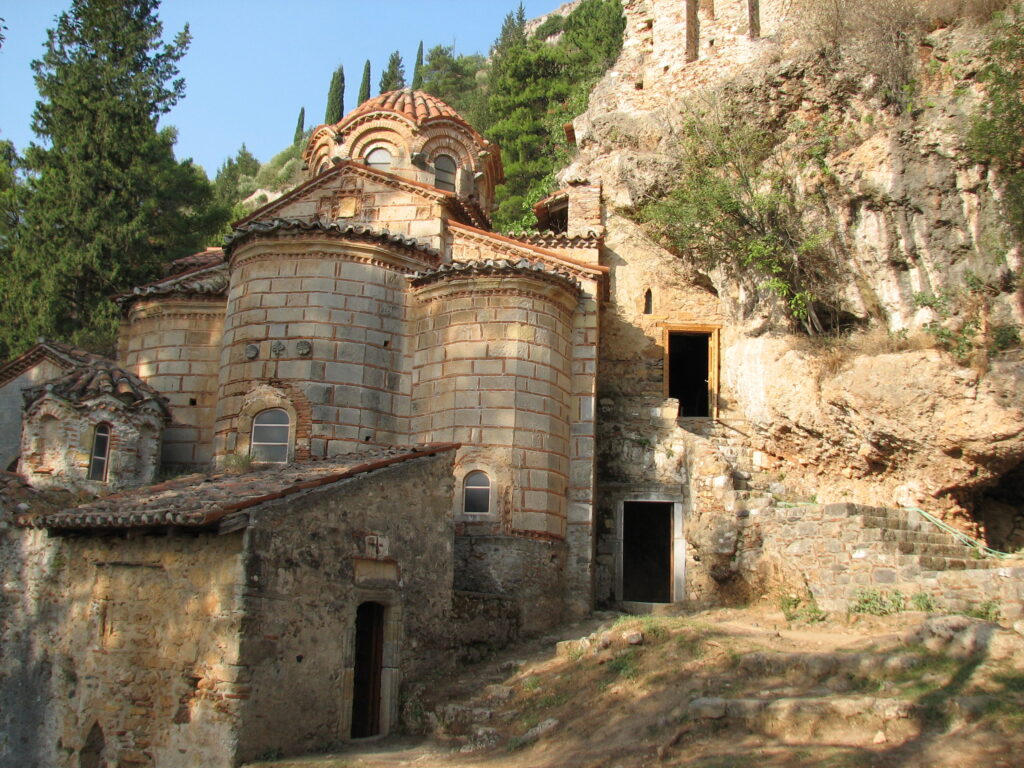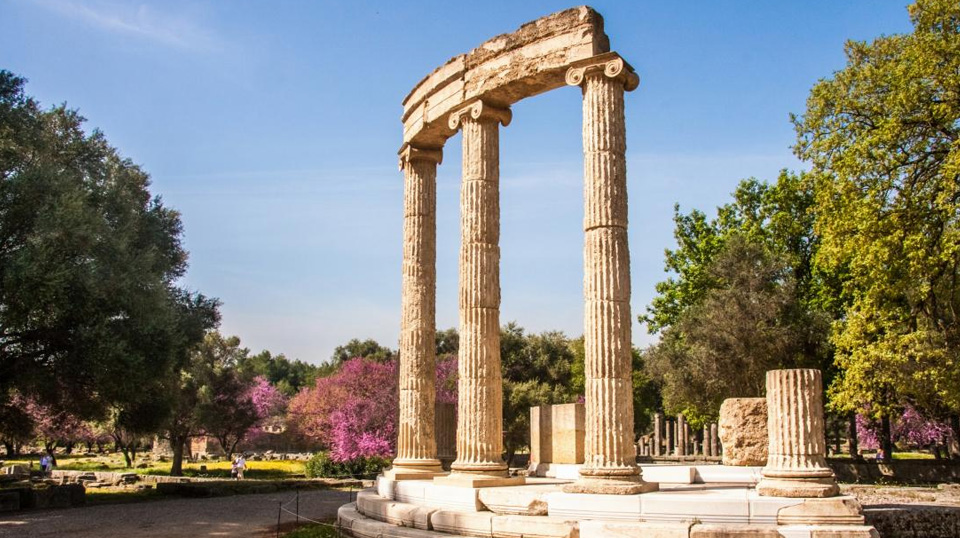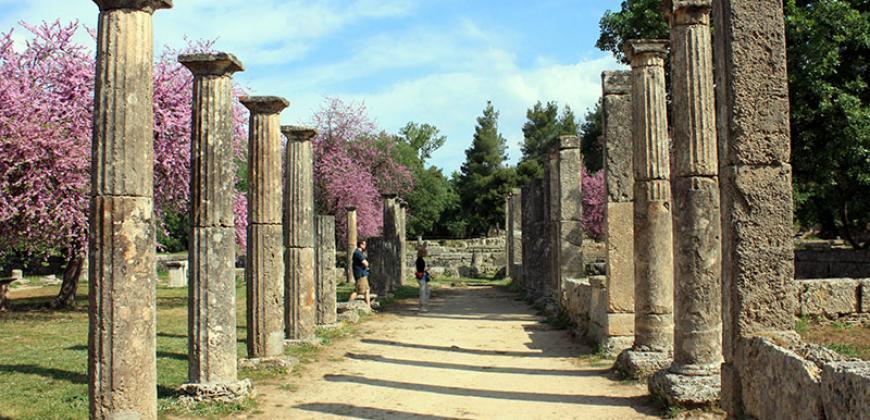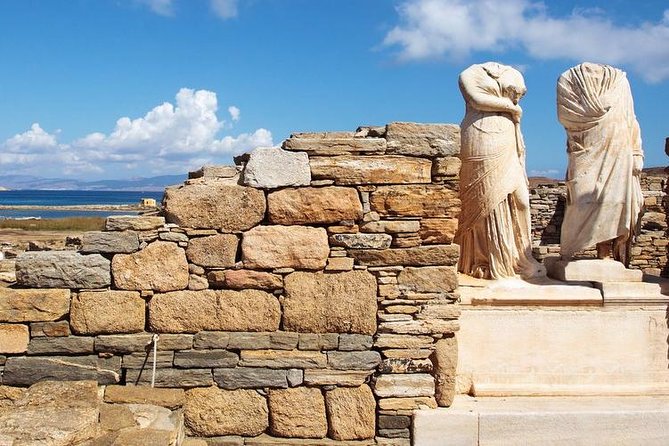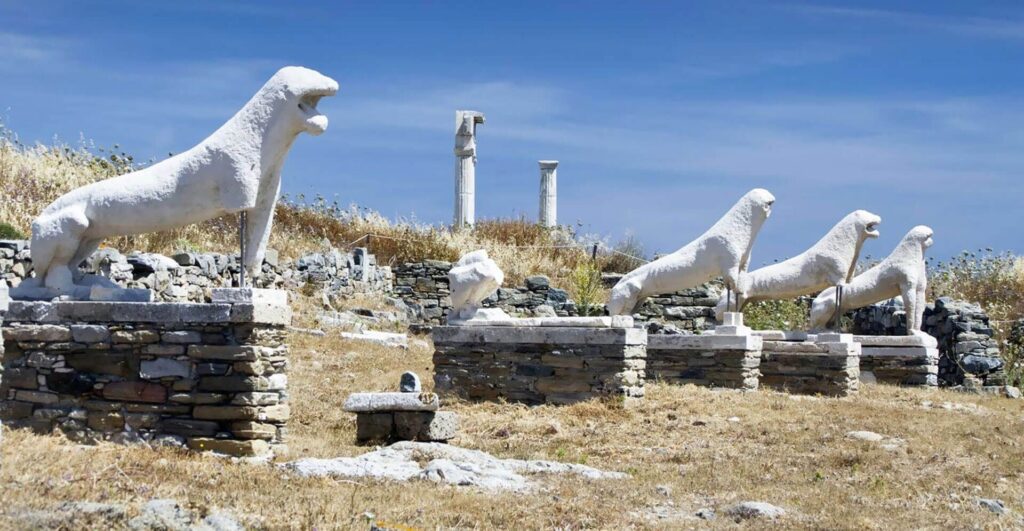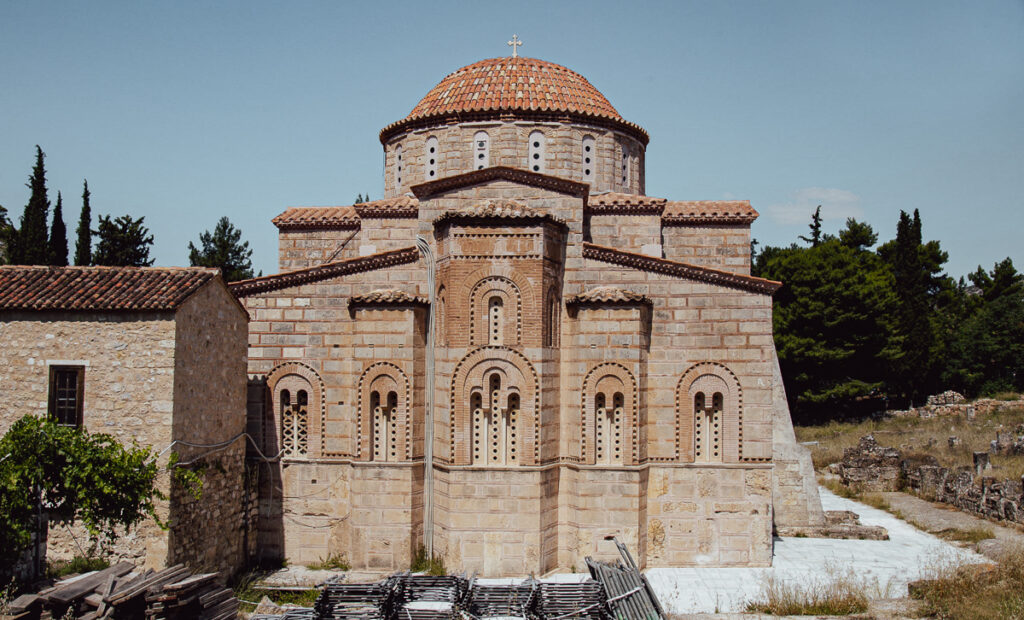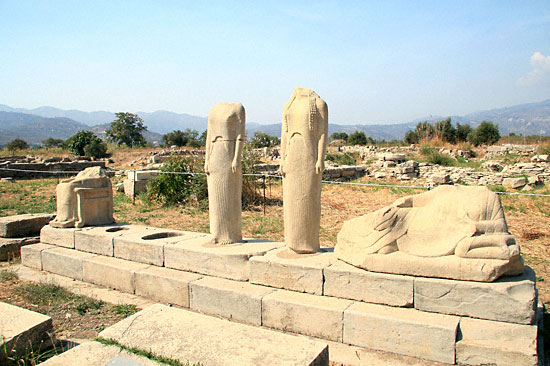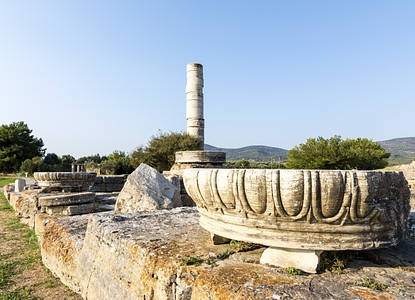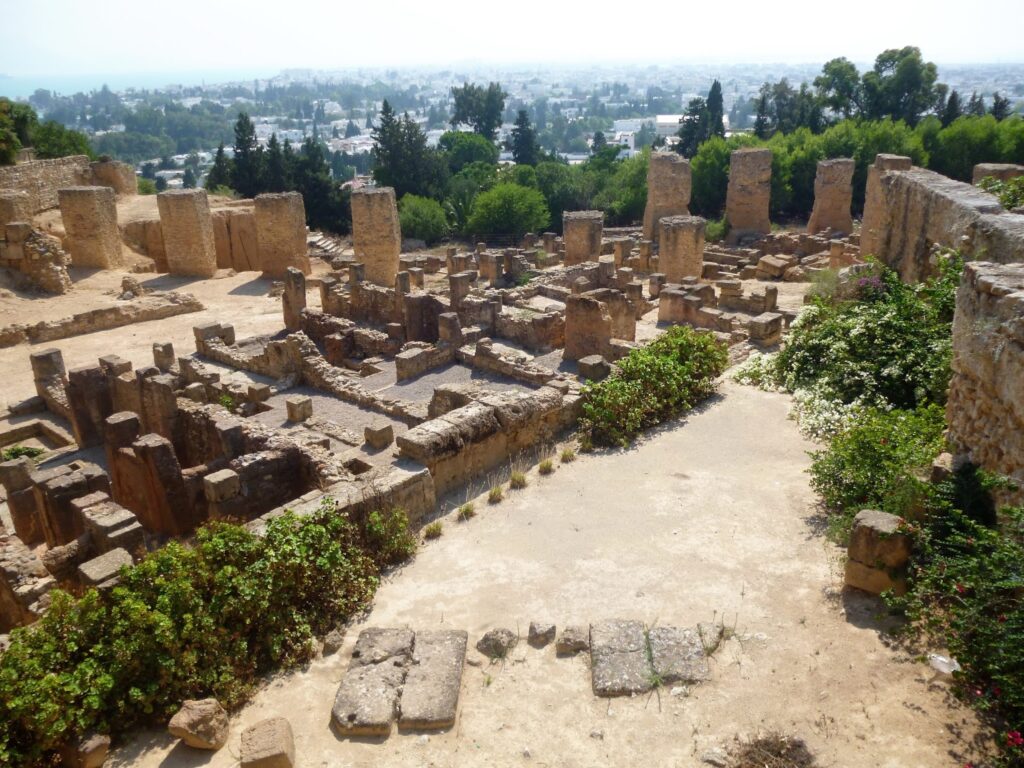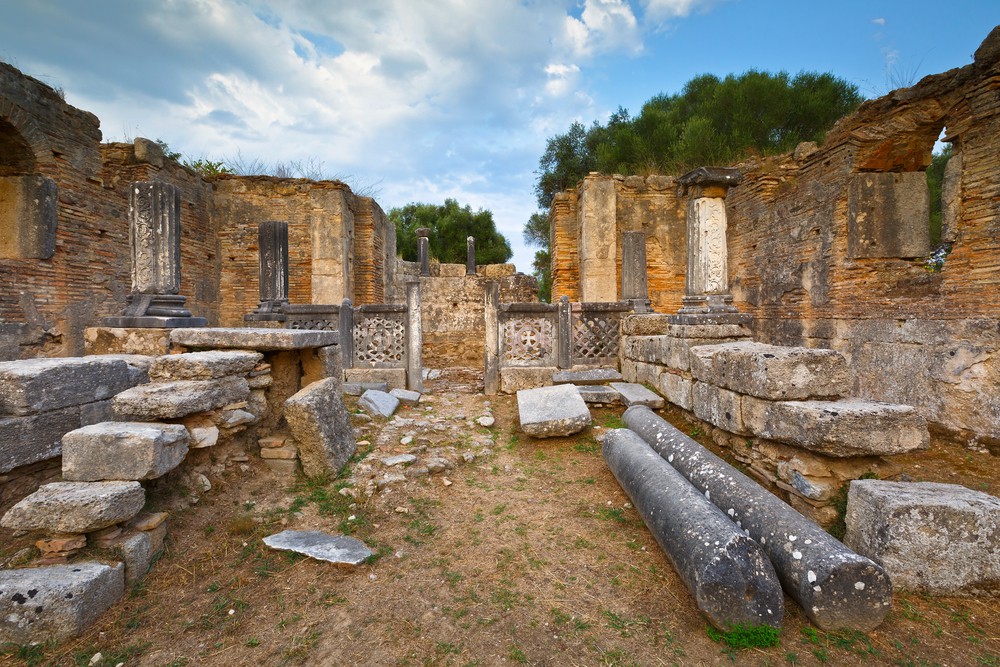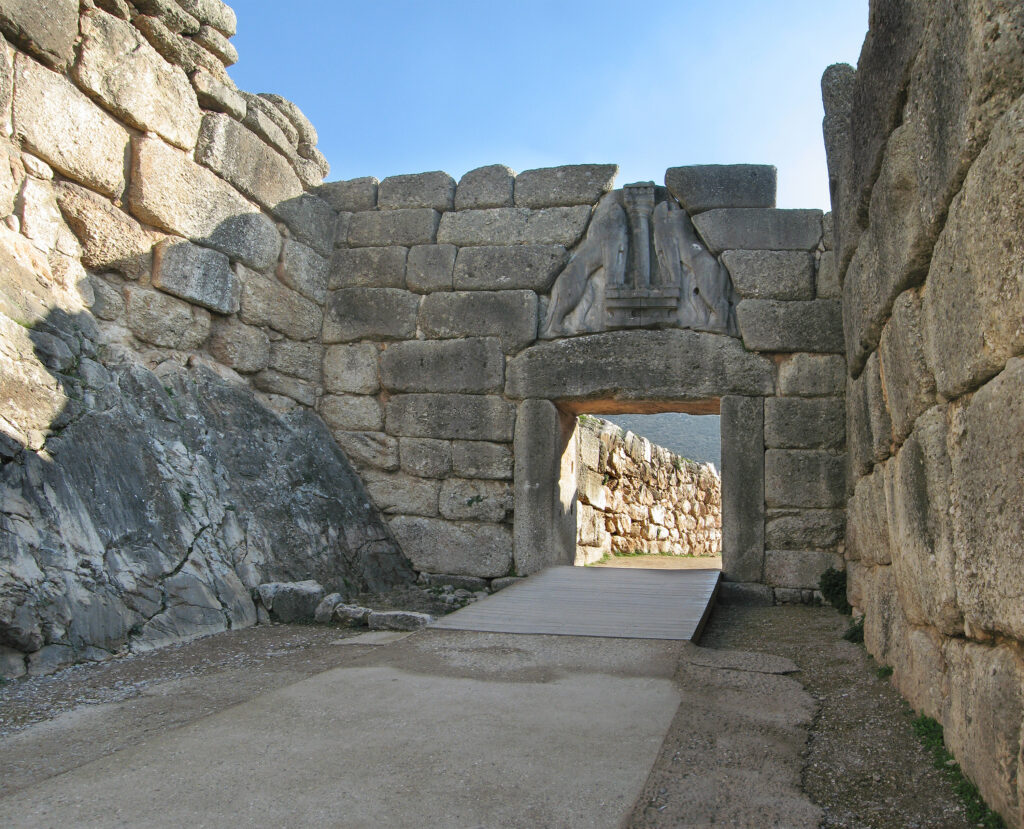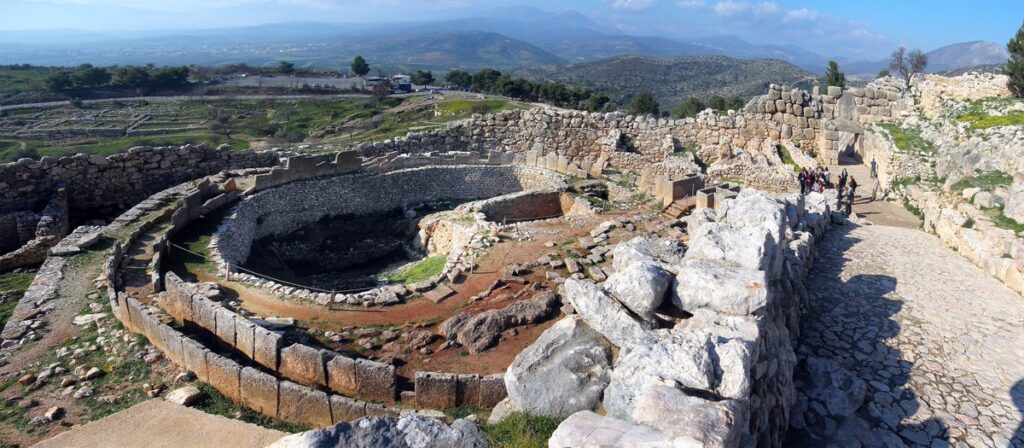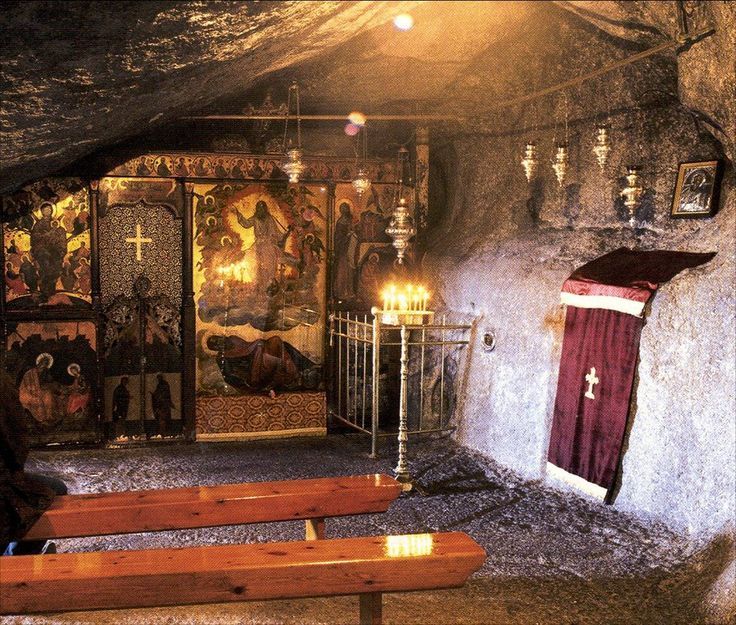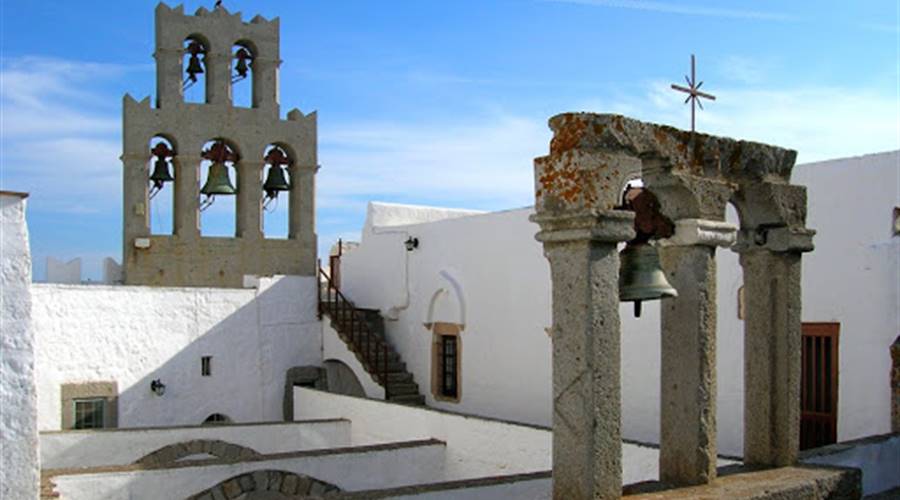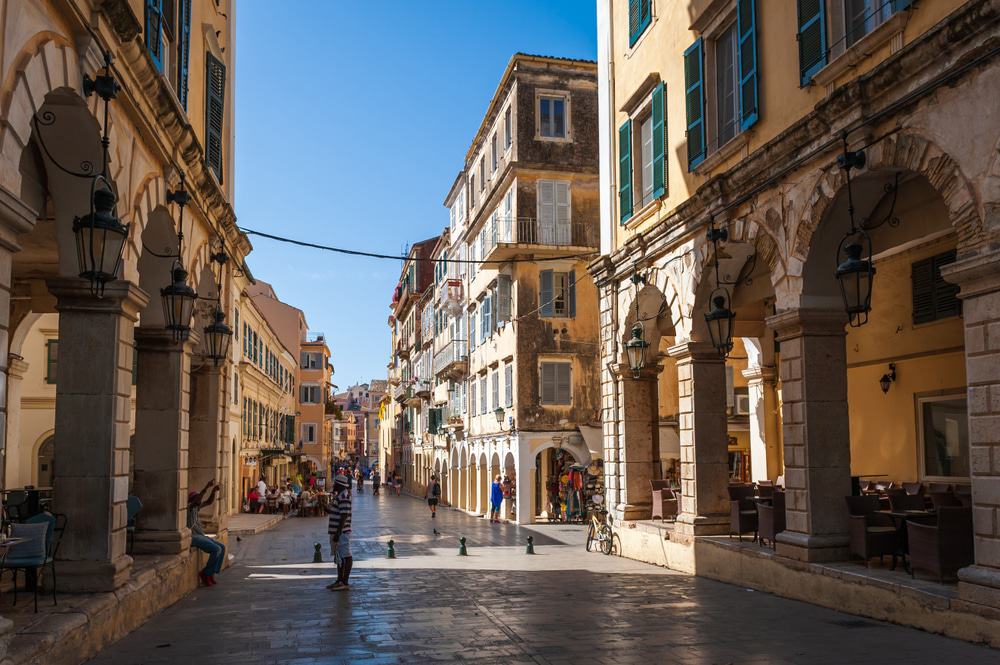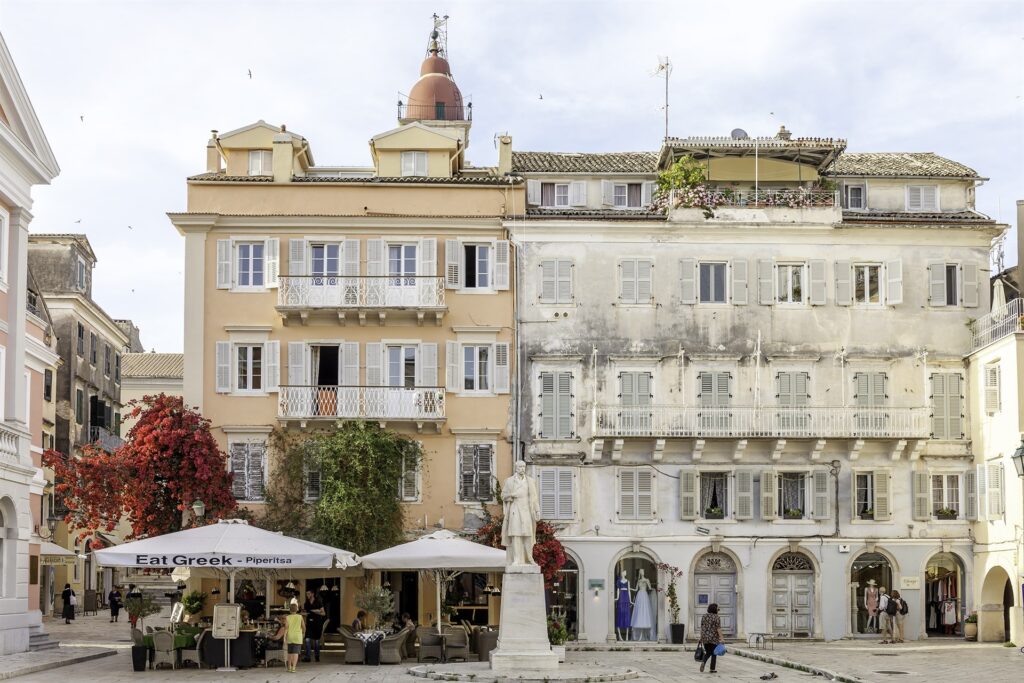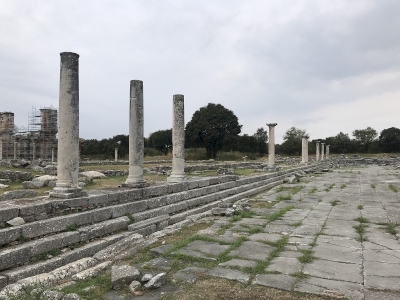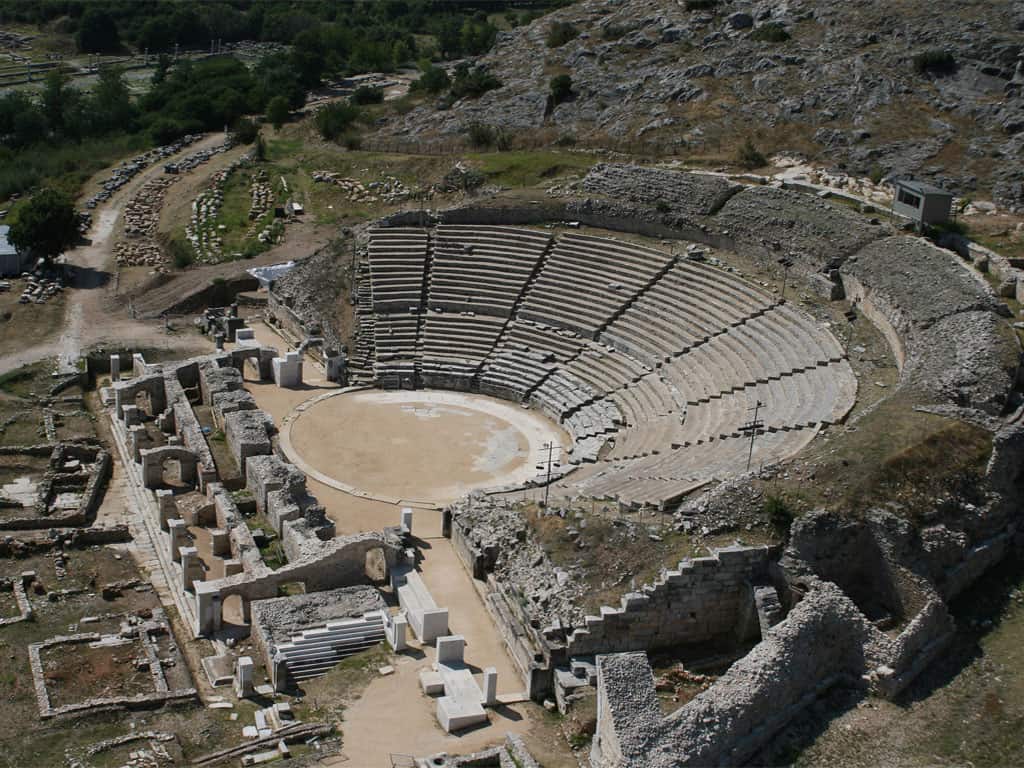The Medieval City of Rhodes was named a UNESCO World Heritage Site in 1988. It is one of the best-preserved and largest inhabited medieval towns in Europe. When you approach the walls of Medieval Old Town of Rhodes keep in mind you are about to enter the oldest inhabited medieval city in Europe.
Today roughly 6,000 people live within the walls, and driving through the old town is restricted to residents only. Boasting incredible Gothic architecture and historical importance, walking around the Medieval City is a must when visiting Rhodes island!
History of the Medieval Old Town of Rhodes
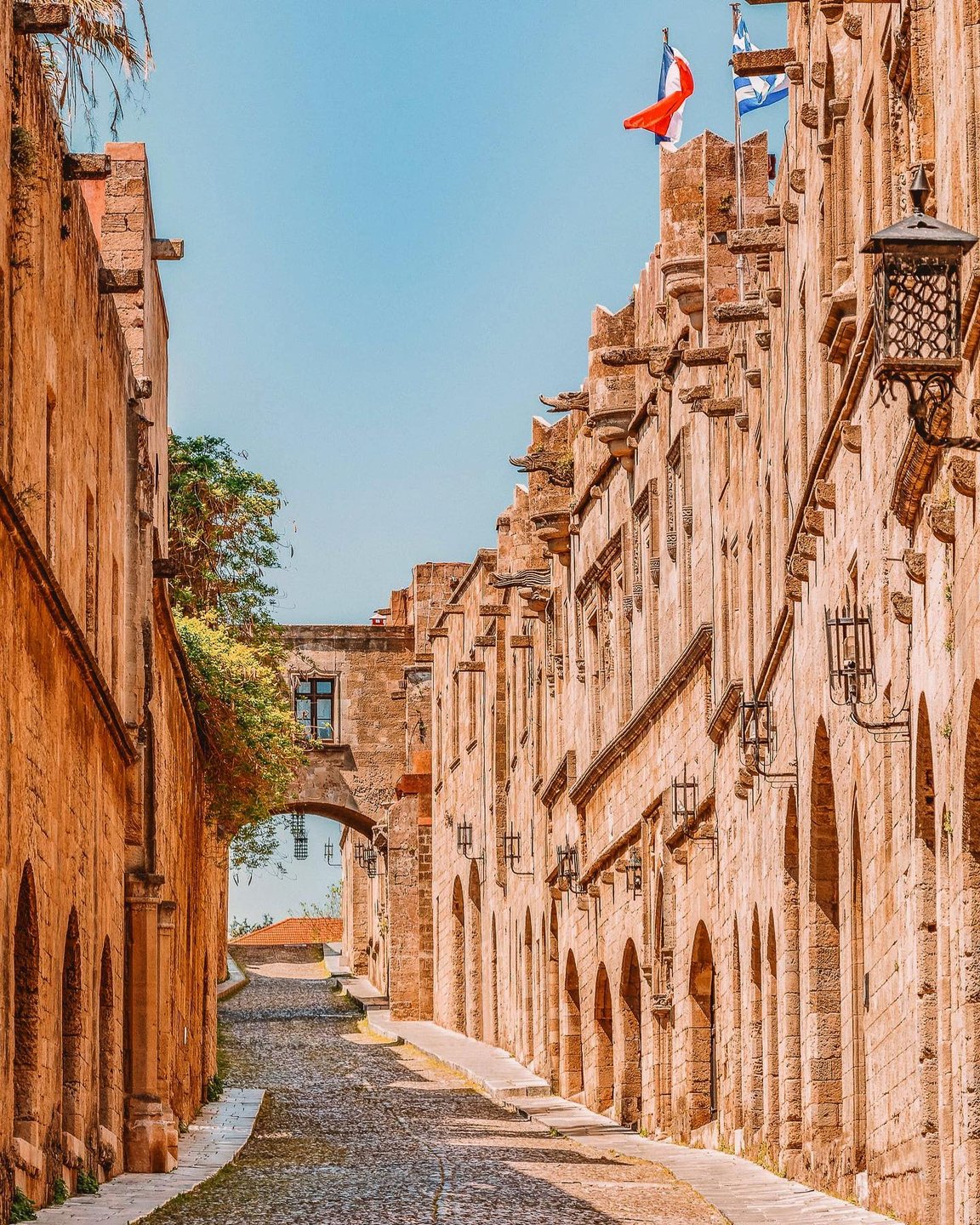
The medieval city is located within a 4 km-long wall and is divided with the high town to the north and the lower town to the south. Originally separated from the lower town by a fortified wall, the high town was entirely built by the Knights. The Order was organised into seven “tongues”, each having its own seat, or “inn”. The inns of the tongues of Italy, France, Spain and Provence lined the main east-west axis, the famous Street of the Knights. To the north, close to the site of the Knights’ first hospice, stands the Inn of Auvergne. The original hospice was replaced in the 15th century by the Great Hospital, which was built between 1440 and 1489.
The town has never been abandoned and when exploring the medieval streets of Rhodes, it seems time has stopped in the middle ages; the magical atmosphere is highlighted by its knightly past.
Strolling the streets of Old Town Rhodes
Boasting cobbled streets and Gothic towers, this wonderful UNESCO World Heritage site is filled with mosaic-covered alleyways, and historical streets that are home to the Palace of the Grand Master with its towered, majestic entrance and large courtyard; Ottoman buildings such as the Suleymanie Mosque and Byzantine temples, medieval buildings, traditional fountains, Byzantine and Gothic churches, shops, taverns, cafes and bars that are all scattered throughout the Old Town, all blending together to create a unique and picturesque whole.
There are roughly 200 streets or alleys – some of them have no name and getting “lost” here is part of the excitement as every little corner has a piece of rich history to be told. And remember the name “Sokratous Street” as a point of reference, as this is the closest the Medieval City comes to having a main street.
What to see in the Old Town of Rhodes
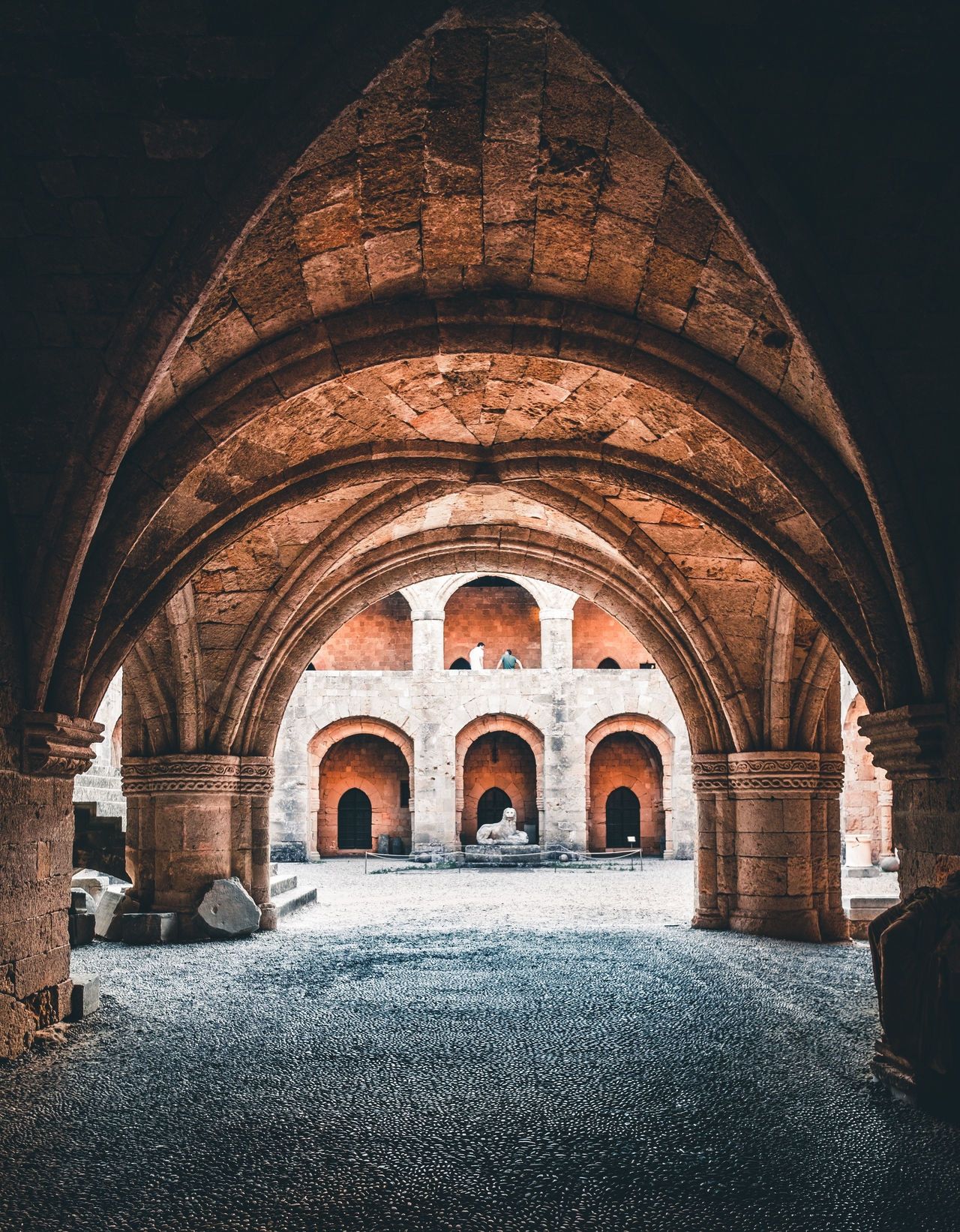
With gates all around the Old Town, you can start your tour from wherever you wish and while wandering around, we recommend you check out the following…
-The Palace of the Grand Master, which has an imposing entrance and well-preserved towers and battlements. The interiors of the buildings, decorated with ancient ornamental objects and artifacts are also a must-see.
-After entering through the Liberty Gate, make your way through to Symi Square and Argyrokastrou Square next to it. Here you will discover the ruins of a Temple of Aphrodite.
-The Street of the Knights; here you will discover more about the Order of Knights and the seven different buildings that were built for each of the tongues, or countries the Knights of Saint John were made up of.
-Knights Street leads to the Palace of the Grand Master that has different exhibits as you walk around the halls of this historic castle.
-Make sure you visit the clocktower (dates back to 1852 and is the highest point in Rhodes Old Town), the synagogue and the mosques of the Suleyman and Recep Pasha.
-It is also worth visiting the churches of Panagia tou Kastrou and the Panagia tou Bourgou.
-Visit the Museum Square where you’ll find the Archaeological Museum located in the former hospital building of the Knights of St. John, here you’ll find artifacts, sculptures, and other items that date back to over 2,000 years ago. Also worth visiting is the Museum of Modern Greek Art, Decorative Arts Collection Museum, Museum of Our Lady of the Castle Museum, the Byzantine Museum and the Jewish Museum of Rhodes.
-While here, we suggest brunch or lunch at the lovely courtyard of the Cafe Auvergne, which is just a step away from Knights Street; or head to Marco Polo Mansion for an unforgettable dinner.
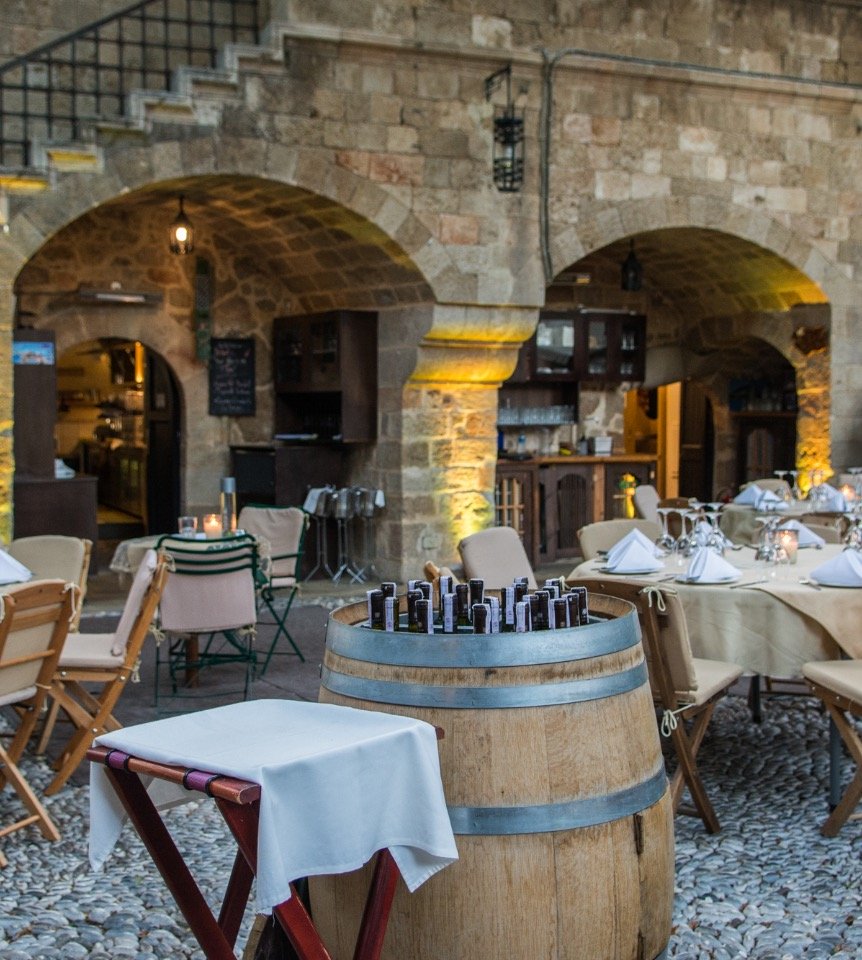
-Have a drink at the Cellar of the Knights- located in Hippocrates Square, it’s one of the most unique places to have a drink. Hippocrates’ Square or Platia Ippokratous is a charming town square in the heart of the UNESCO Old Town with a majestic staircase, a wonderful fountain, and a range of cafes and shops filled with locally made sandals, jewellery and other products. The square can be reached by coming into the Old Town through the Marine Gate.
– Once you’ve walked through the inner streets of the Old Town, make sure you make the most of the views from the historic part of town from up high- you’ll be able to take some spectacular photos from above.
Getting there
From Rhodes Airport it’s around a 35-minute drive, you can catch a taxi or a bus from the airport to the Old Town.

